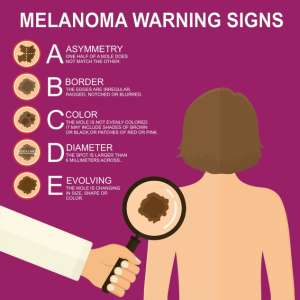Skin cancer, including melanoma, is one of the most common types of cancer, but it’s also one of the most preventable and treatable, especially when caught early. Awareness and understanding of early signs are crucial steps toward effective prevention and treatment. A simple way to remember how to identify potential melanomas is through the ABCDEs:
A for Asymmetry: One half of the mole doesn’t match the other.
B for Border: Edges are irregular, ragged, notched, or blurred.
C for Color: The color is not the same all over and may include shades of brown or black, sometimes with patches of pink, red, white, or blue.
D for Diameter: The spot is larger than 6mm across (about ¼ inch – the size of a pencil eraser), although melanomas can sometimes be smaller than this.
E for Evolving: The mole is changing in size, shape, or color.
Regular self-examinations using these criteria can be lifesaving. If you notice any of these signs, it’s crucial to consult a dermatologist.
Actinic Keratosis: A Precursor Worth Paying Attention To
Another skin condition to be aware of is actinic keratosis (AK), which often appears as rough, scaly patches on the skin. These patches are usually found on areas exposed to the sun, like the face, lips, ears, back of your hands, forearms, scalp, or neck. While actinic keratoses are not skin cancer, they can potentially develop into squamous cell carcinoma (SCC), a type of skin cancer. Feeling a rough texture on your skin or noticing new scaly patches are signs that it’s time to see a dermatologist.
The Importance of Professional Skin Checks
Given the potential for common skin blemishes to progress to more serious conditions, the importance of regular skin checks by a professional cannot be overstated. Dermatologists are trained to notice subtle changes that might not be immediately apparent to the untrained eye. They can also provide advice on how to perform self-examinations more effectively and recommend treatment options if necessary.
Taking Action
Early detection is key in the fight against skin cancer. By familiarizing yourself with the ABCDEs of melanoma detection and being vigilant about changes in your skin, such as the development of actinic keratosis, you’re taking an important step in protecting your health. Remember, an annual skin check with a dermatologist or a skin specialist is a powerful tool in your arsenal against skin cancer. It’s a simple step that could save your life.
